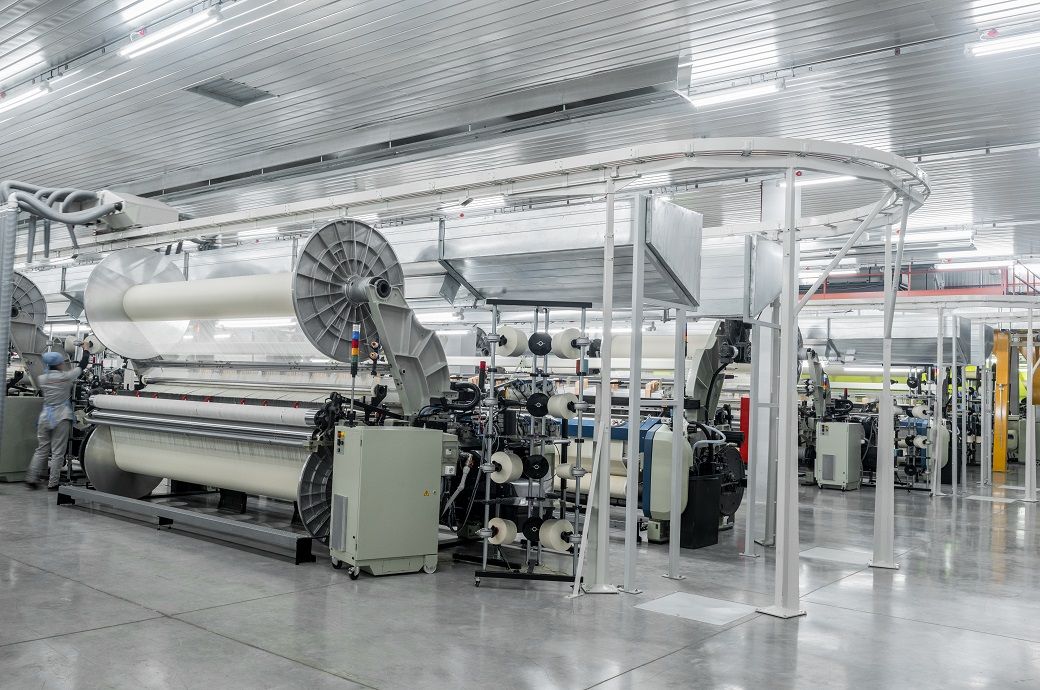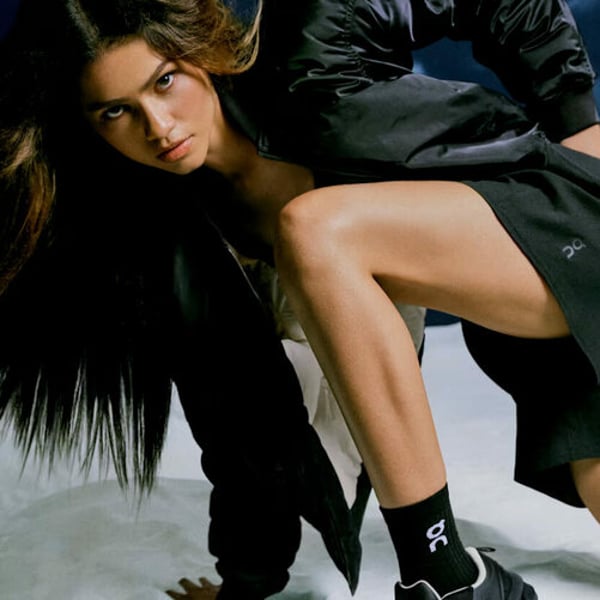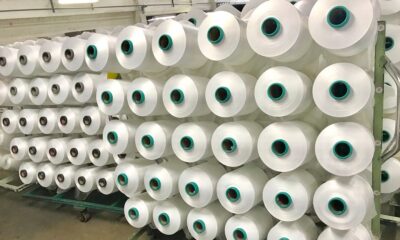Fashion
A distinctly eclectic Paris Fashion Week featuring Leonard, Giambattista Valli, and Vetements

Published
October 4, 2025
Paris Fashion Week entered its fifth day with an especially intense programme. In particular, the womenswear ready-to-wear shows for Spring/Summer 2026 revealed designers’ pursuit of freshness and lightness. Leonard Paris and Giambattista Valli were prime examples. Vetements, for its part, opted for provocation.
Leonard Paris jetted off to California, channelling Hollywood and Beverly Hills, for a festive summer that promises to be scorching. The wardrobe conceived by German designer Georg Lux leaned into evening and cocktail dressing, with fluid minidresses and long, diaphanous gowns cut from airy silks. The pieces floated, at times seeming suspended, rippling with each step in a whisper of intangible fabrics.
“I was inspired this season by muses such as Faye Dunaway and Jerry Hall, but also by the drawings of Puerto Rican fashion illustrator Antonio Lopez,” confided the creative director backstage, who welcomed guests to the elegant private mansion in the 16th arrondissement, where the house has been based since 2018. Clearly, his collection looked as much to the seventies jet set as to Hollywood’s golden age, with draped, diva-worthy, sequinned gowns.
More than ever, prints took centre stage, from Californian palms lifted from the house’s 1980s archives to the Art Deco floral theme developed by Leonard during the 1970s, along with a new red-and-orange poppy motif found on cotton-poplin dresses, but also painted onto a jacket and a transparent recycled-plastic bag, or worked into enamelled metal earrings. And flowers of every shape and in every shade ran through this richly varied collection.
Next summer’s wardrobe is all about volume, with draping, generous balloon sleeves, puffed silhouettes and flared dresses. A few “cricket club”-style striped looks and masculine blazers and suits provide contrast, though they remained thoroughly glamorous, crafted in greige twill embroidered with gold sequins and rhinestones.
Giambattista Valli welcomed guests into the salons of his house, a stone’s throw from the Opéra on Boulevard des Capucines. Baskets brimming with fruit and wildflowers lined the catwalk. The tone was set, as the Italian couturier celebrated nature in all its splendour, infusing his collection with an ingenuous candour.
With their colourful headscarves, blouses and ample petticoats or culottes, or their white lace apron dresses, the models evoked peasant women returning from the fields, or shepherdesses from old tales in search of Prince Charming. Some outfits were strewn with bucolic motifs: flowers, bouquets, fruit, clovers and butterflies.
Natural materials such as linen and cotton dominated, bringing a touch of authentic simplicity to the whole via little dresses, jackets and shorts suits decorated with hand-painted flowers in the manner of Dutch masters such as Vermeer, whose still lifes inspired Giambattista Valli this season.
Ruffles multiplied like petals in delicate dresses with billowing, airy volumes. They come in the colours of summer fruits: peach, raspberry, lemon, cherry, strawberry and plum. Lightness prevailed with shot taffeta and, above all, organza—whether embroidered cotton organza, ruched silk organza or crinkled iterations.
After taking over a McDonald’s on the Champs-Elysées in June 2019, Vetements returned to show on the world’s most beautiful avenue, this time taking over a concrete basement formerly occupied by an Adidas store. In the dim light, a silhouette descended the stairs to cross what looked like a squalid garage, its ceiling interlaced with neon tubes. Face masked by a nylon stocking, the first model appeared in leather trousers and boots, wearing a white T-shirt with a swastika crossed out by a prohibition sign.
For its return to the catwalks after sitting out last season, the brand is looking to make an impact. But its message was, to say the least, muddled. After this opening manifesto look, what followed was a sexist show in which all the women who stepped onto the catwalk were systematically undressed at the back, while the men were not subjected to the same treatment—save for one model whose jeans turned into transparent plastic at the rear, revealing a very chaste pair of white boxer shorts.
Fashion has often explored front/back construction in clothing, but here the experimentation left observers unconvinced. Whether in slip dresses or a tight skirt with a T-shirt, a suit, a printed dress, a severe straight grey skirt, or even a candy-pink ballgown, seen from behind the women were reduced to mere sex bombs, buttocks and legs on full display, covered only in couture tights and sometimes tight shorts or thigh-high boots.
At the back, in fact, garments morphed into high-cut bodysuits, while long dresses were shortened and skirts were either merely tacked at the front without being properly worn, or systematically unbuttoned at the back. Even the classic tweed suit was subverted, the skirt replaced by a pair of tweed briefs—also, of course, high-cut. Elsewhere, trench coats and overcoats open at the back or are stripped of fabric, revealing the lining, as with certain jackets worn by the men.
Two looks, strapped with an enormous cushion—airbag-style—fixed to the front at pelvis level, prompted questions. At the end of the show, coup de théâtre. A final model, dressed in an elegant black crinoline gown entirely open at the back, crossed the catwalk in tears, seeming to buckle under the pain. What was the message here? That this was, in fact, a denunciation of women as objects and of their hypersexualised image? Of the excesses of social media?
By trying too hard to conceptualise, Guram Gvasalia, who took over as the brand’s creative director in 2021 (he succeeded his brother Demna, who left for Balenciaga and is now at the helm of Gucci), risks losing his way.
This article is an automatic translation.
Click here to read the original article.
Copyright © 2025 FashionNetwork.com All rights reserved.
Fashion
India’s Industrial output rises 4% as economy shows strong resilience

Dun & Bradstreet estimates IIP growth to have moderated to 3.5 per cent in October compared with 4 per cent in September and 4.1 per cent in August due to weaker non-durable consumer output, inventory overhang, and subdued external demand. Even so, the combination of strong domestic demand, prudent monetary policy, and rising trade diversification continues to shield the Indian economy from global turbulence.
India’s economy remains resilient, with IIP up 4 per cent in September 2025 despite global slowdown pressures, according to Dun & Bradstreet.
It expects moderation to 3.5 per cent in October, while inflation eases sharply, with CPI projected at 0.6 per cent and WPI turning negative.
Firm domestic demand, rising gold reserves, and stronger external inflows continue to support India’s growth outlook.
CPI inflation eased sharply to 1.5 per cent in September—its lowest level since June 2017—and is projected to fall further to 0.6 per cent in October, driven by subdued food prices and GST rationalisation effects. WPI inflation is estimated to turn negative at minus 1 per cent in October, from 0.1 per cent in September and 0.5 per cent in August. These indicators, also highlighted in the table, point to cooling input costs and improving purchasing power. While this may support short-term demand, Dun & Bradstreet notes that post-festive normalisation and muted wholesale pricing power may lead businesses to adjust production and delay restocking, Dun & Bradstreet said in a press release.
Financial conditions remained broadly stable. The 10-year G-Sec yield is estimated to have eased to 6.5 per cent in October, while the 91-day T-Bill yield held steady at 5.5 per cent for the third straight month. The repo rate remained unchanged at 5.5 per cent as the RBI kept a neutral stance, citing resilient growth and subdued inflation. Liquidity fluctuated due to festive and GST outflows, prompting the central bank to conduct multiple repo and reverse repo auctions. Bank credit growth is estimated to moderate to 9.8 per cent in October from 10.4 per cent in September. These trends are captured in the table, which shows steady short-term yields and modest credit softening.
India’s external buffers strengthened further, particularly gold reserves. The RBI’s gold holdings stood at $97.5 billion at the end of September, accounting for 13.9 per cent of total forex reserves—the highest share in more than two decades. The RBI also declared a record redemption price of ₹12,704 per unit for Sovereign Gold Bonds issued in 2020, reflecting the rise in global gold prices. The rupee averaged ₹88.6 per USD in October, with expectations of mild appreciation to ₹88 in November, consistent with the table’s exchange rate forecasts.
India’s external sector displayed resilience alongside emerging pressures. The central bank’s amendment to the Foreign Exchange Management Regulations now permits rupee-denominated lending to Sri Lanka, Nepal, and Bhutan, promoting greater regional financial integration. India drew foreign investment inflows of $7.3 billion in Q1 FY26, comprising $2.5 billion in FII inflows and $1.6 billion in portfolio investment, reflecting global investor confidence in India’s economic fundamentals.
“India’s economic trajectory continues to defy global headwinds, anchored by resilient domestic fundamentals and a benign inflation outlook. Industrial output remains robust, though signs of post-festive normalisation and inventory adjustments suggest a near-term moderation,” said Arun Singh, global chief economist, Dun & Bradstreet.
“The RBI’s neutral stance and stable yields reflect confidence in macroeconomic stability, while strategic trade diversification and rising gold reserves underscore India’s proactive positioning as a resilient and forward-looking economy amid global uncertainty. As advanced economies grapple with fiscal fragility, India’s calibrated policy mix and expanding external partnerships offer a compelling narrative of resilience and opportunity in a fragmented global landscape,” added Singh.
Fibre2Fashion News Desk (SG)
Fashion
On runs in Europe, sprints in Asia

Published
November 19, 2025
On has found a new playing field in Asia. In the third quarter of 2025, when its sales rose by nearly 25% year on year (35% at constant exchange rates) to net revenue of 794 million Swiss francs (860 million euros), sales in the Asia-Pacific region surged. They reached 145 million Swiss francs for the quarter, an increase of 109% at constant exchange rates, more than doubling to account for almost 20% of the Swiss sports brand’s total revenue.
In a conversation with financial analysts, the company noted that the opening of the Ginza flagship in Tokyo showcased the strength of this strategy, generating the highest monthly sales in the brand’s global network. For the group, scaling up in the region is strategic.
“Japan set the tone, but the Asia-Pacific region has shown the scale of what’s possible,” explained Martin Hoffmann, the company’s chief executive and chief financial officer.
“We’re connecting with a new generation of younger, deeply design-conscious customers, proving the worldwide appetite for On’s premium, performance-led approach. What was once a new frontier has become a major engine for the brand.”
The brand is expanding into new markets and recently opened its first two stores in South Korea, in Seoul at The Hyundai Seoul department store and at Lotte World Mall Jamsil. It also intends to build momentum in Greater China.
This points to a rapid rebalancing between the company’s regions worldwide. In the quarter, the Americas remained the brand’s largest market, with 436 million Swiss francs, up 10.3% (21% at constant exchange rates). The Europe-Middle East-Africa (EMEA) region generated 213 million Swiss francs, an increase of 29% (+33.0% at constant exchange rates).
“Europe, the Middle East and Africa delivered an exceptional quarter… We are seeing incredible demand in the UK, which has firmly established itself as one of our largest global markets, tremendous momentum in newer markets such as France and Italy, and a sustained re-acceleration of growth in the German-speaking region,” the chief executive told analysts.
He also highlighted the significant contribution of the Champs-Élysées store in Paris to the brand’s appeal. The brand will apply the same strategy in Spain, with the opening this weekend of a flagship store in Madrid, on Calle Serrano.
Direct sales rose sharply to 315 million Swiss francs, up 28% on the same period a year earlier. The wholesale channel posted sales of 480 million Swiss francs, up 23%. Above all, On’s management emphasises its strategy of positioning On in the premium segment of the sports-lifestyle market. Despite an inflationary environment, price increases in the key U.S. market have not dented demand. According to management, this validates the brand’s pricing power. Meanwhile, the company posted a record gross margin of 65.7% for the quarter, up 510 basis points year on year.

Another important takeaway for the Swiss brand is that it no longer relies solely on its footwear range, which is regularly refreshed with new models. By product category, third-quarter footwear sales totalled 731 million Swiss francs, up 21.1% (+30.4% at constant exchange rates). Apparel generated 50 million Swiss francs, up 87% (+100.2% at constant exchange rates), and accessories 13.0 million Swiss francs, up 145% (+160.8%).
Granted, apparel still represents a small share of On’s performance. But the outlook is encouraging for its chief executive: “We are not building apparel as a complement to our footwear business, but as a business within the business, serving the same communities, but with a unique product offering and customer experience. The result is that apparel generates high-value incremental growth across all our channels.” It remains to be seen whether collaborations with Zendaya or Burna Boy will boost its lifestyle sales.
Net income came to 119 million Swiss francs, up 290% year on year, for a net margin of 15% versus 4.8%. For the first nine months of the year, sales reached 2.270 billion Swiss francs, compared with 1.712 billion a year earlier, an increase of 33% (+37% at constant exchange rates). Net income declined to 135 million Swiss francs (compared with 153 million in 2024), while adjusted EBITDA reached 436 million Swiss francs (+51%) for a margin of 19% (compared with 17%).
On has raised its forecasts for 2025: constant-currency sales growth is now expected to increase by 34%, corresponding to revenue of around 2.98 billion Swiss francs. Gross margin is now targeted at “around 62.5%” and adjusted EBITDA margin above 18%.
It should be noted that the decline in net income over nine months is a reminder that growth is also accompanied by challenges related to currency effects, logistics costs and strategic investments.
This article is an automatic translation.
Click here to read the original article.
Copyright © 2025 FashionNetwork.com All rights reserved.
Fashion
Kering must downsize, reduce Gucci exposure and chase synergies, CEO de Meo says in memo

By
Reuters
Published
November 18, 2025
Kering‘s return to growth will require reducing its reliance on struggling flagship Gucci, further scaling back its store network and chasing more synergies, Chief Executive Luca de Meo said in a memo seen by Reuters.
The document, a summary of a more detailed memo dubbed “ReconKering” recently sent to senior staff, offers the first detailed overview of de Meo’s strategic vision for the group.
Emerging less than a month after the group struck a deal to offload its beauty divisionin a $4.7 billion euro deal with l”Oreal to raise much-needed cash and focus on its core luxury fashion business, the note is marked by a candid, yet modest tone.
“We remain humble,” de Meo wrote in the note, saying that his ambition was to “become the undisputed challenger in luxury” in five to ten years.
Long seen as a threat to its larger French rival LVMH, Kering has been grappling with a double-digit sales decline at its flagship label Gucci while piling up debt through acquisitions.
De Meo in the memo sets a 18-month timeline to get all brands back on the growth track, while saying that restoring a “top financial performance” will take three years.
Kering said in a statement de Meo outlined “the foundations of Kering’s future strategic plan” when taking over the helm in September, which have since been “broadly communicated with employees.”
The official strategy plan will be presented to investors next spring, it added.
In the note, de Meo said the company, which has closed 55 stores in the past year, further needs to downsize its retail network and rethink its price positioning and assortment after years of price hikes.
It also needs to cut back what de Meo called an “overdependency” on Gucci by developing its Saint Laurent, Bottega Veneta and Balenciaga brands.
The group’s jewellery division, which has struggled to scale up and compete with the brands of larger rivals LVMH and Richemont, needs to chase synergies, de Meo said.
Among the brands to develop, de Meo also cited suit maker Brioni, which has been rumoured as a likely divestment candidate along with loss-making fashion label Alexander McQueen.
Kering shares, which had lost over half of their value in two years, have risen by 75% since de Meo was hired to succeed controlling shareholder Francois-Henri Pinault as chief executive.
© Thomson Reuters 2025 All rights reserved.
-

 Tech1 week ago
Tech1 week agoFrom waste to asset: Turning ethanol production CO₂ into jet fuel
-

 Tech4 days ago
Tech4 days agoNew carbon capture method uses water and pressure to remove CO₂ from emissions at half current costs
-

 Politics5 days ago
Politics5 days agoBritish-Pakistani honoured for transforming UK halal meat industry
-

 Sports3 days ago
Sports3 days agoTexas A&M officer scolds South Carolina wide receiver after touchdown; department speaks out
-

 Business4 days ago
Business4 days agoThese 9 Common Money Mistakes Are Eating Your Income
-

 Tech1 week ago
Tech1 week agoSecurity flaws in portable genetic sequencers risk leaking private DNA data
-

 Business4 days ago
Business4 days agoWhat’s behind Rachel Reeves’s hokey cokey on income tax rises?
-

 Politics6 days ago
Politics6 days agoInternet freedom declines in US, Germany amid growing online restrictions




















